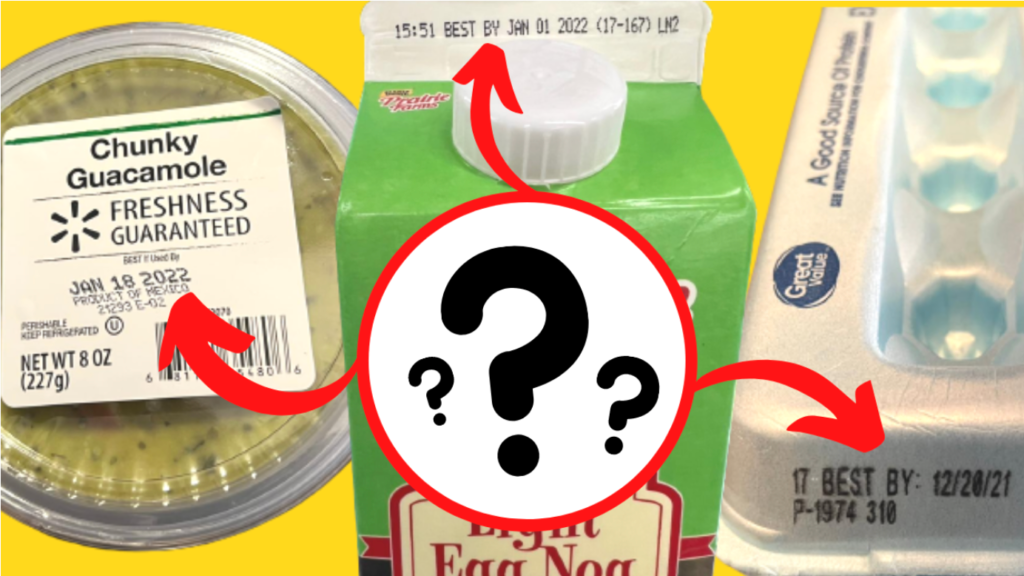What do the expiration dates printed on your food really mean?
The date printed on your food packaging often accompanies phrases like “Best If Used By” or “Best By”.

The date printed on your food packaging often accompanies phrases like "Best If Used By" or "Best By". (CREDIT: Creative Commons)
Ever rummaged through your pantry only to spot a bag of chips that's past its printed date? Or perhaps you've stumbled upon discounted groceries near their expiration dates at the store. The question arises: does that date signify the end of the road for your food?
The date printed on your food packaging often accompanies phrases like "Best If Used By" or "Best By". Contrary to popular belief, this date doesn't indicate that the food has expired.
According to the Food and Drug Administration (FDA), except for infant formula, which requires a "use by" date to ensure nutritional adequacy, these dates serve as guidance for optimal quality rather than safety.
Infant formula which requires a "use by" date. (CREDIT: Creative Commons)
Consumers frequently misinterpret these dates as strict deadlines, resulting in billions of dollars' worth of food being needlessly discarded. Abby Snyder, an associate professor of food science at Cornell College, emphasizes that date labels suggest how quickly to consume the food before its quality deteriorates, not that it's necessarily unsafe.
Andy Hirneisen, a senior extension educator at Penn State Extension, clarifies that passing the date label doesn't render the food automatically harmful. Rather, its quality might degrade, leading to changes in texture, flavor, or appearance.
Despite these alterations, the food remains safe for consumption until signs of spoilage, such as unusual odor or texture, manifest.
Related Stories
Proper storage plays a crucial role in maintaining food quality. While refrigerating items like ketchup and butter after opening is recommended, adherence to storage instructions prevents bacterial growth and preserves quality. Ignoring these guidelines accelerates spoilage and compromises food safety.
If you find yourself holding a product a day or two beyond its date label, don't rush to toss it out.
Both the USDA and FDA advise assessing its quality and inspecting for spoilage before discarding. To assist consumers further, the USDA offers the FoodKeeper App, providing storage recommendations to extend freshness.
USDA offers the FoodKeeper App, providing storage recommendations to extend freshness. (CREDIT: Creative Commons)
Since their widespread adoption in the 1970s, date labels have aimed to address consumer concerns about freshness. In 2019, the FDA recommended the use of "best if used by" for quality and "use by" for perishable items, aligning with consumer comprehension.
Despite efforts to enact federal policies clarifying date labeling, progress has been slow, with proposed bills like the one introduced in the House facing hurdles in subcommittees.
The FoodKeeper can help consumers use food while at peak quality and reduce waste. The storage times listed are intended as useful guidelines and are not hard-and-fast rules. (CREDIT: USDA / Apple App Store)
In the UK, major retailers have taken steps to combat food waste by eliminating "best before" labels on certain products. Such initiatives aim to reduce unnecessary waste and encourage consumers to make informed decisions about their food consumption.
Understanding food date labels empowers consumers to make informed choices, reducing both food waste and unnecessary expenditure. While the dates provide guidance on quality, proper storage and vigilance against spoilage remain key to ensuring food safety and minimizing waste.
For more science and technology stories check out our New Discoveries section at The Brighter Side of News.
Note: Materials provided above by The Brighter Side of News. Content may be edited for style and length.
Like these kind of feel good stories? Get the Brighter Side of News' newsletter.
Joshua Shavit
Science & Technology Writer | AI and Robotics Reporter
Joshua Shavit is a Los Angeles-based science and technology writer with a passion for exploring the breakthroughs shaping the future. As a contributor to The Brighter Side of News, he focuses on positive and transformative advancements in AI, technology, physics, engineering, robotics and space science. Joshua is currently working towards a Bachelor of Science in Business Administration at the University of California, Berkeley. He combines his academic background with a talent for storytelling, making complex scientific discoveries engaging and accessible. His work highlights the innovators behind the ideas, bringing readers closer to the people driving progress.



